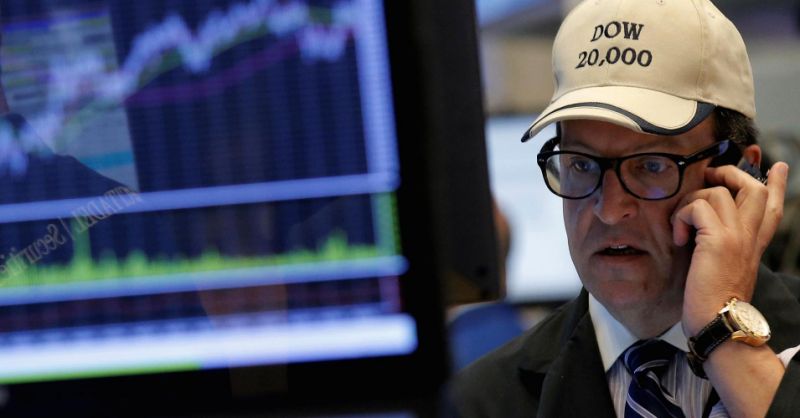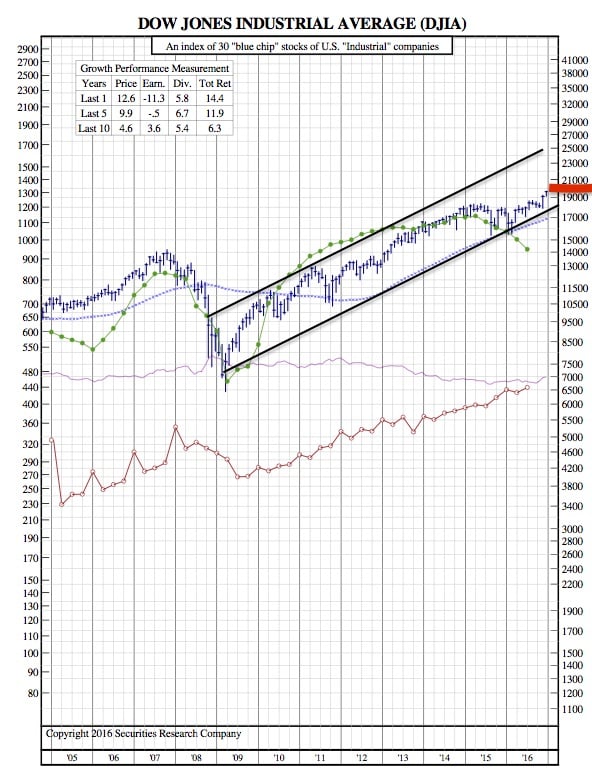DJIA 12-Year Chart as the Dow Nears 20,000
CNBC — As the weekend approaches, the Dow (Dow Jones Global Indexes: .DJI) celebrates another new high and traders are afraid to get in the way of a steamroller market even as many stocks seem to be pricey.
“At this point the market is getting harder to buy, but very painful for shorts as most targets have been met or exceeded before it was supposed to happen in a Santa Claus rally, near Christmas. It makes it a very tricky time for traders. Even the most bullish traders don’t want to feel like they’re chasing it now. The worst thing you could do is revenge the rally, which is if you sold early, start shorting. I talked to a lot of traders who shorted the Russell,” said Scott Redler, partner at T3Live.com.
The Dow closed up 65 points Thursday, at 19,614, in its 19th gain in 23 sessions, and its 13th new high since Election Day. The S&P 500, (^GSPC) Nasdaq,Russell 2000 (^RUT) and Dow transports (Dow Jones Global Indexes: .DJT) also all set record closing highs. The S&P ended up 4 at 2,246. The S&P financial sector rose nearly 1 percent, leading Thursday’s gain, to end at its highest level since December 2007. In the past month alone, the sector is up 30 percent.
On Friday, there is consumer sentiment and wholesale trade data, both at 10 a.m. ET. But the market action may get more attention.
Paul Hickey, co-founder of Bespoke, said he is watching the net new highs in the S&P 500, and at 18.6 percent Wednesday they were at the highest level since late 2014.
“Price doesn’t lie, but internals tell you if the market is having second thoughts. When you’re having this much participation, it’s a broad-based rally and it’s supportive of the rally,” Hickey said.
He said since the election, Goldman Sachs (GS) is up 32 percent and it has been leading the Dow. “The average performance of Dow stocks is 5.5 percent but the Dow is up over 7 percent because you have the big move in Goldman,” Hickey said.
Bespoke noted that the financials have gained more than 30 percent since the election, but the sector, along with energy had an “epic collapse” in the last 10 years. Financials lost 80 percent during the financial crisis, while energy fell 40 percent between the middle of 2014 and this January.
Other sectors like consumer discretionary and industrials have rallied since they election and they are hitting new highs, while financials and energy are still playing catch up. Bespoke said both sectors are still about 30 percent below their old highs, and the risk is that once they catch up, investors are likely to take profits. “While that’s a negative, we also think the fact that these sectors aren’t already at new highs makes adding exposure to them easier to stomach for investors looking to put money to work,” Bespoke said.
The Dow is within easy reach of 20,000 after crossing 19,000 on Nov. 22. “The top five stocks account for 700 of the just under 1,300 gain,” Hickey said. The biggest contributor was Goldman, at 400 points, then UnitedHealth Group (UNH), with 100 and JPMorgan (JPM), also contributing nearly 100 points, he said.
The index last took off from 10,000 in 2010, but it first crossed 10,000 in 1999 and has taken more than 17 years to get close to doubling that level. The average annual gain would be 4.5 percent a year, for the Dow going back to 1999. “That’s garbage returns,” said Hickey. He said the return from when the Dow took off from 10,000 in 2010 was more like 12 percent.
DJIA 12-Year Chart:





